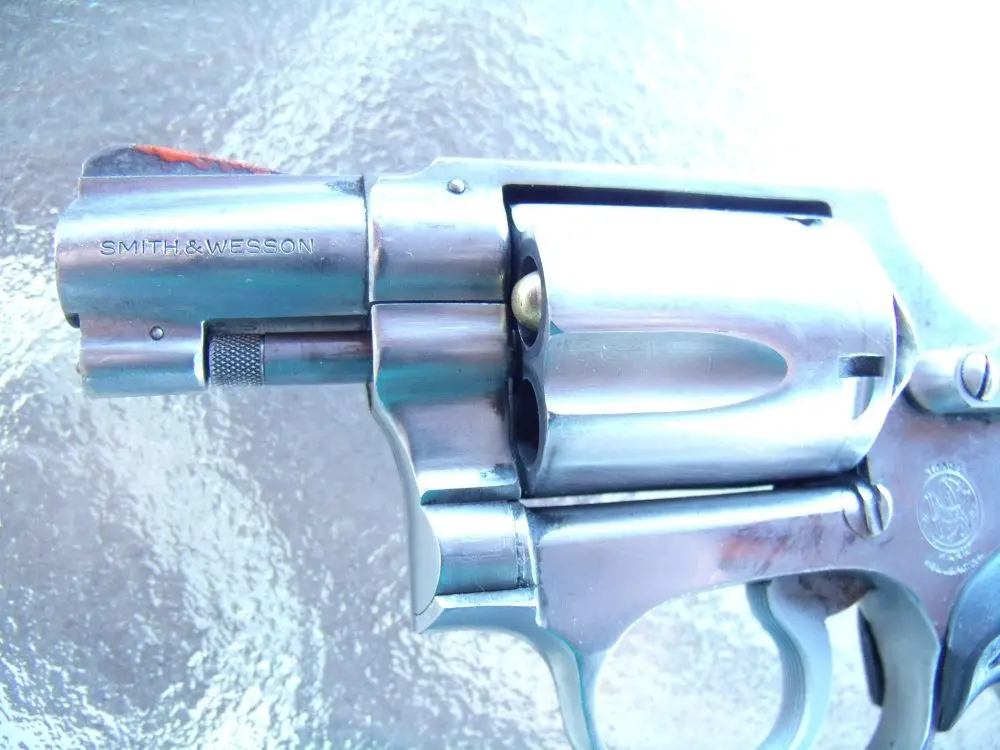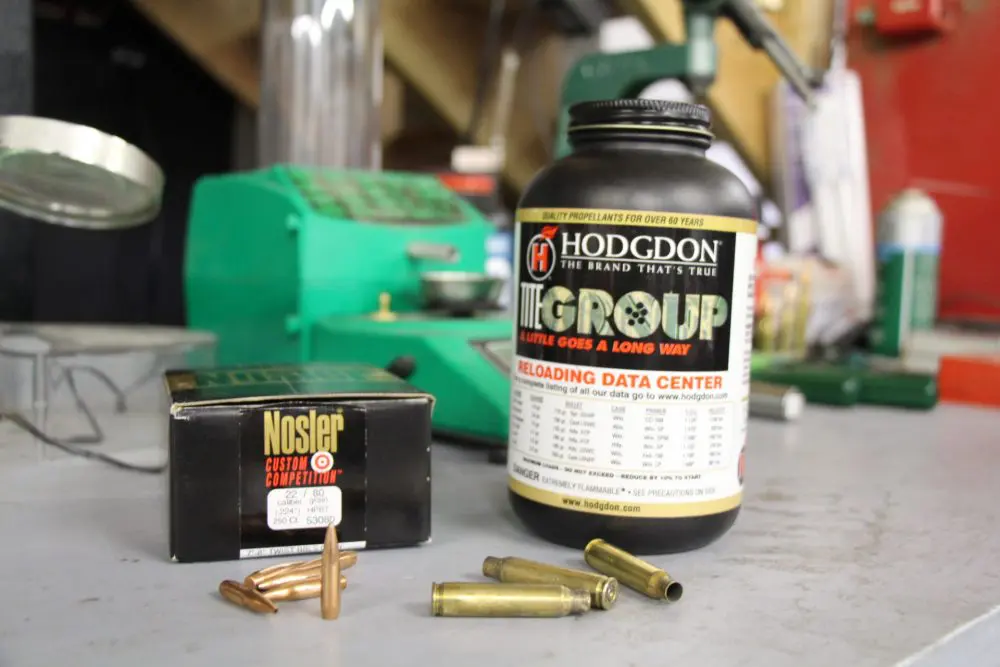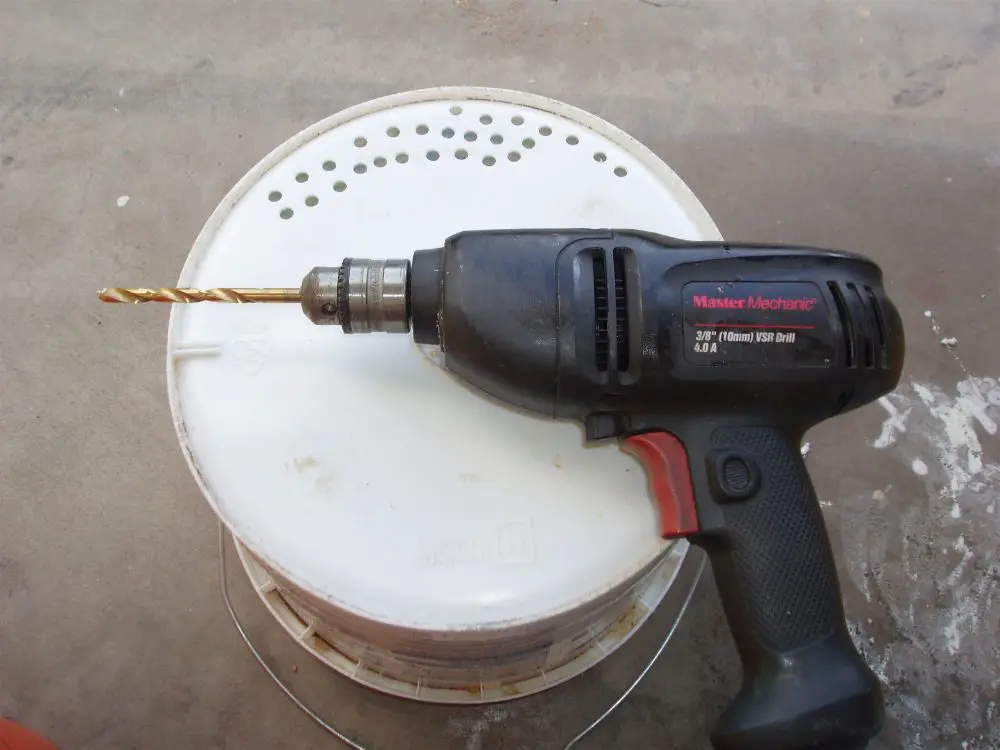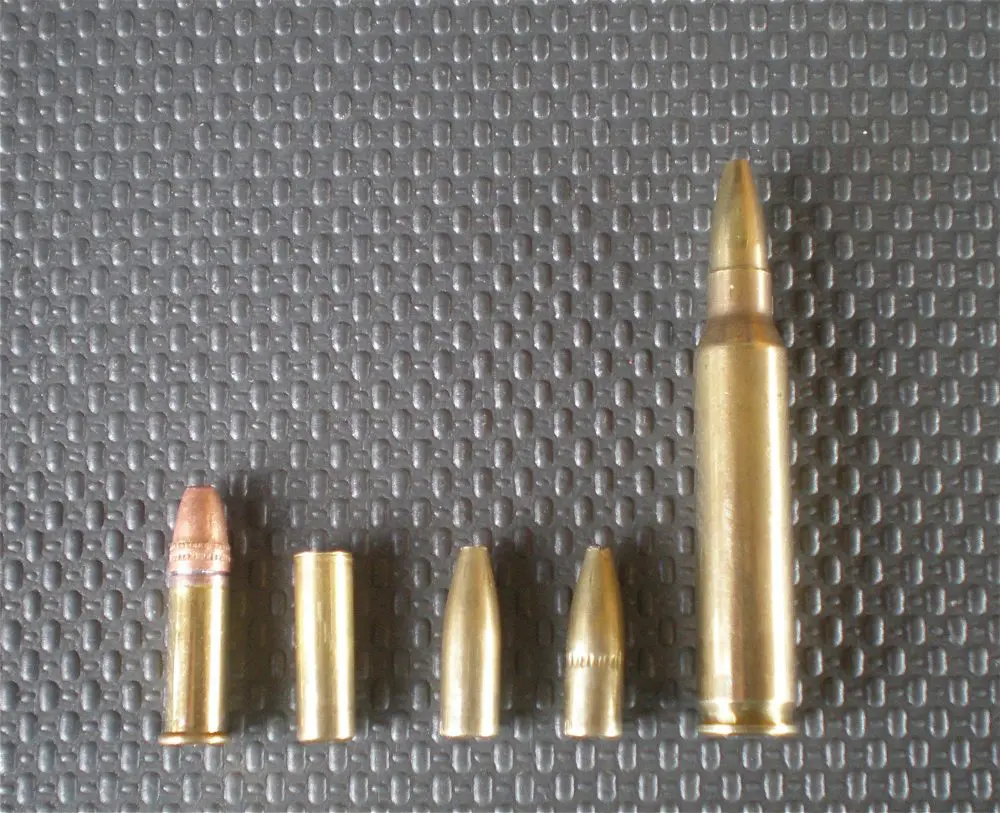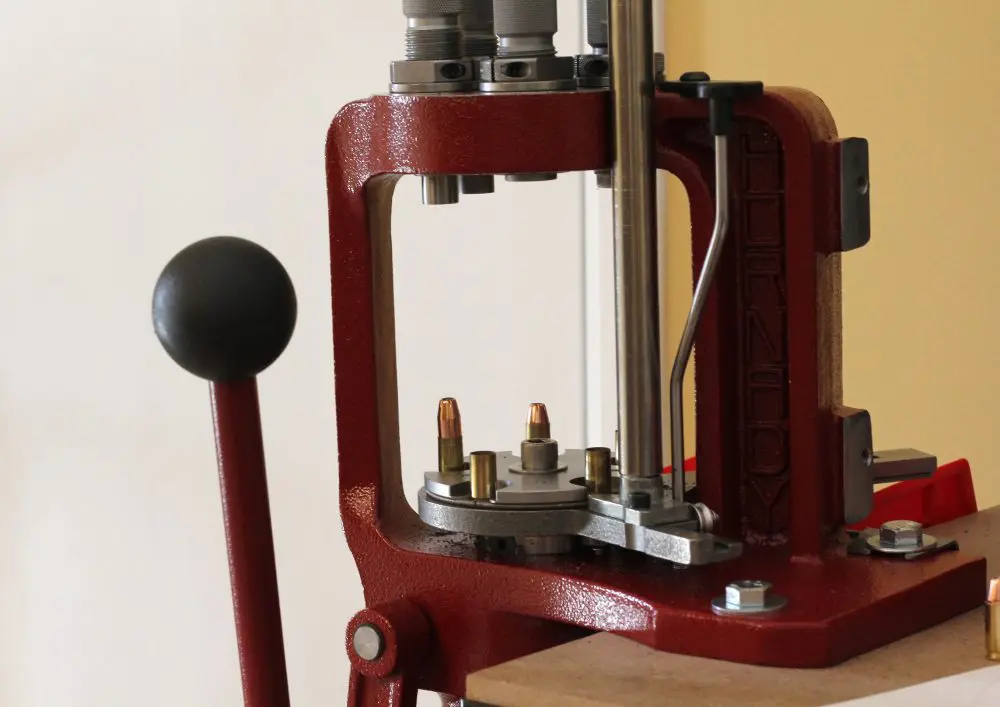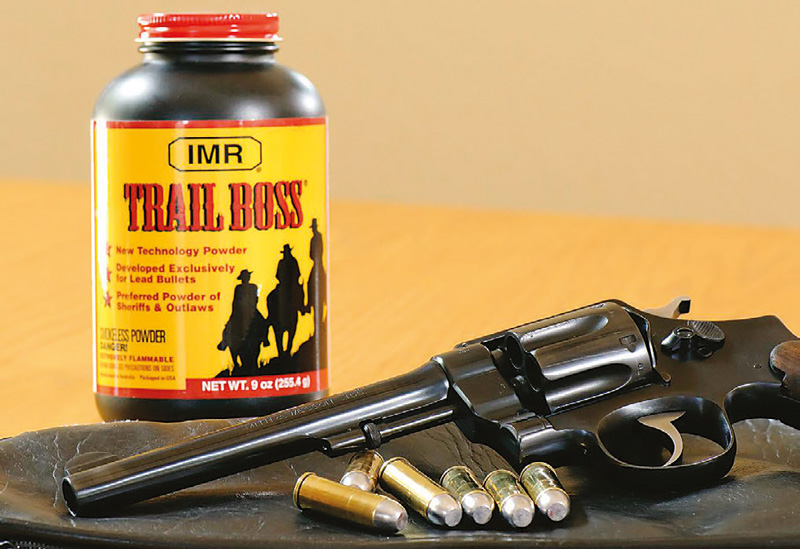
I started reloading about ten years ago because I bought a .41 Magnum. Practice ammunition was plentiful for other calibers that I shot, but joining the .41 cult put me in a pickle.
Ammo was expensive and everything was full power. It was hard to become proficient with my new revolver when I couldn’t afford to feed it and it kicked like an angry mule with available factory ordnance. Winchester Silvertip was the only “mid-range” load out there. Recoil was tolerable, but it still cost about a buck per round, even back then.
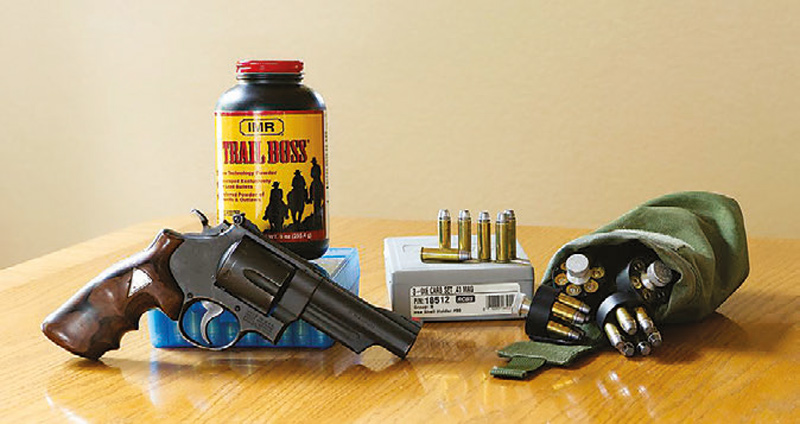
Table of Contents
TAKING THE RELOADING PLUNGE
After some research, I borrowed the checkbook from my wife to kit up for reloading. I invested in equipment, primers, and some commercially cast 215-grain semiwadcutters (SWC). Hodgdon’s Titegroup was chosen for its lack of position sensitivity based on the small charges I’d be using.
The goal was to launch the SWC at about 900 feet-persecond (fps)—essentially the original .41 Police load of the 1960s—from my four-inch S&W Model 57 for a manageable practice load.
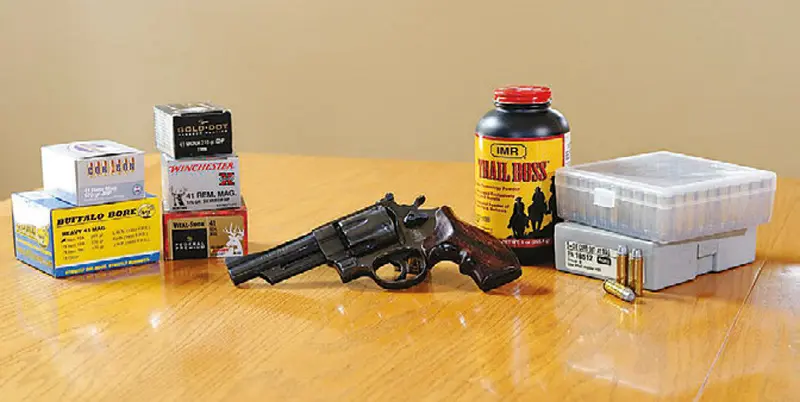
I measured every single charge on a balance beam scale, as I was deathly afraid of overcharging a case and removing the topstrap from my retro fighting revolver. That was a bit tedious, but after a few evenings I had 100 rounds of sharp-looking ammunition.
My new Pro-Chrony chronograph revealed the Titegroup load performed just as advertised, averaging 919 fps with an extreme spread of 21 fps. Mission accomplished, but ammo took a long time to build on my non-progressive equipment. I sprang for an electronic powder dispenser and scale combination that sped things up a bit.
TRAIL BOSS
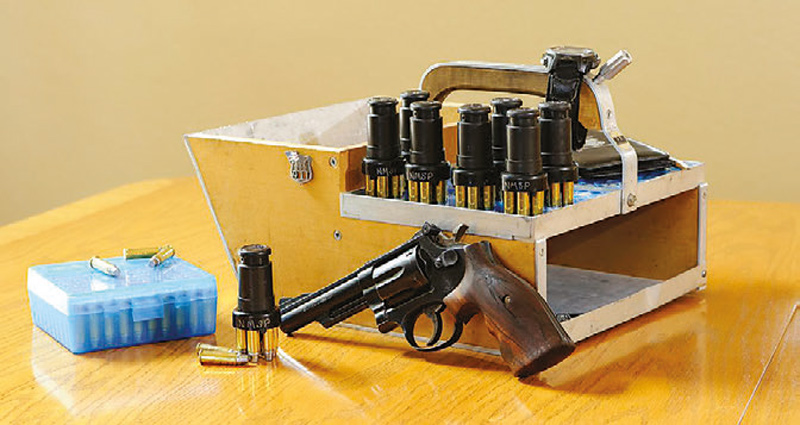
While perusing manuals and websites pertinent to my new hobby, I came across a relatively new powder—IMR’s Trail Boss. Designed primarily for cowboy action shooting, it is designed for cast bullets at tame velocities. IMR advertised it as being much bulkier than conventional powders, making it impossible to double charge a handgun case.
At #19 on the burn rate chart, it burned slower than Bullseye or Titegroup but faster than Winchester 231 or Alliant Unique. It looked like exactly what I needed.
I bought some and settled on 6.5 grains for the .41 SWC. It was the maximum charge but was only generating 17,100 CUP. The .41 Magnum can safely handle loads in the 40,000 CUP range. It was a max load only because any more would be compressed by the bullet when fully seated. You can’t stuff enough in a case to get anywhere near maximum pressure. True to IMR’s claim, a double charge overflowed messily and was instantly obvious.
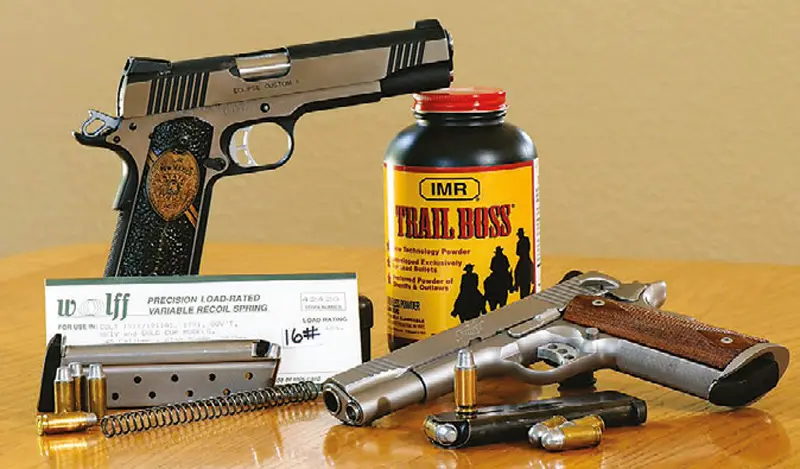
Trail Boss looks like little green paper donuts—unlike any powder I’d ever seen. It didn’t agree with my electronic dispenser, so I started scooping it onto the scale with an empty .38 Special case. Six and a half grains came just shy of the top of the case. I marked the case and filed it down to the proper height.
Filling the shortened case to the brim, it threw consistently accurate charges. I checked every tenth case until I trusted the method. Using the homemade measure significantly reduced the time required to charge the .41 cases.
Testing showed an average velocity of 815 fps with an acceptable extreme spread of 35 fps. It burned exceptionally clean, and the report was pleasant. From a practical standpoint (fired offhand), I saw no accuracy difference from my carefully measured Titegroup loads. The speed wasn’t quite there but entirely adequate for a practice load. It was easy on the gun and the shooter.
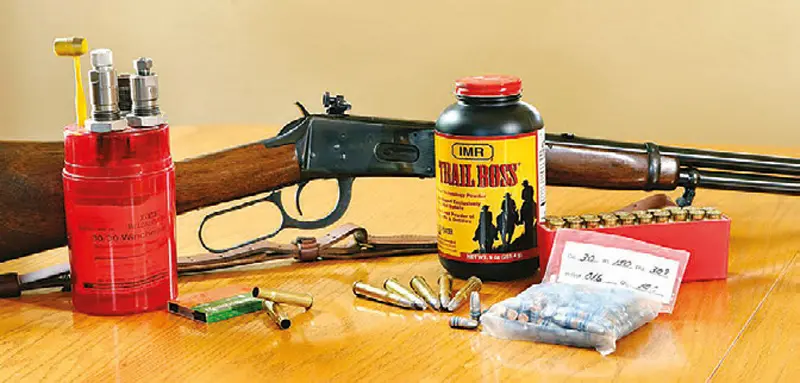
The increased volume of ammo produced was worth the velocity loss. I could safely fill hundreds of cases in the house with my kids—much better than being a garage hermit spending quality time with my scale.
SUCCESS WITH OTHER CALIBERS
I tried Trail Boss in the .44 Magnum with 200-grain cast RNFPs, with similarly pleasing results. Seven grains yielded an average of 827 fps with 21 fps extreme spread from my 629 Mountain Gun. The lightweight N frame was suddenly fun to shoot and the load was notably accurate.
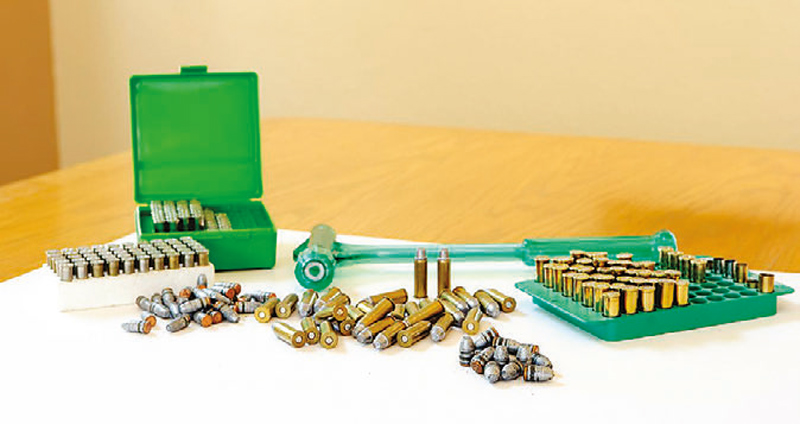
Shooting a night course with the .44 revealed that Trail Boss had virtually no flash signature. Added bonus! Soon I was feeding Trail Boss to my .44 Specials and .45 Colts, too. I built new “powder measures” as needed when expanding calibers.
A 9mm case worked perfectly to throw a 3.8-grain charge. Paired with 158-grain SWCs in the .38 Special, it yielded just below 700 fps. I started using it for PPC service revolver practice. It shot so well through my old Model 19 that I now use it in matches. That load in a K frame revolver is perfect for teaching new shooters and youngsters handgun fundamentals.
SAFE SALVAGE
Another application for Trail Boss is salvaging mystery handloads. A friend gave me a huge pile of .357 and .44 Magnum reloads of unknown origin. Pulling bullets revealed heavy charges of what appeared to be H-110 or 296 behind gas-checked cast bullets in the .44 cases and 200-grain cast rifle bullets in the .357s. No thank you.
I let my son extort me to the tune of 15 cents per round to pull bullets and swab the remaining powder and bullet lube from the cases. I put the bullets away for Armageddon use and the cases sat on a shelf (I was scared to de-prime the live primers from the cases). Based on the loads, I assumed the cases held magnum primers, but couldn’t be sure.
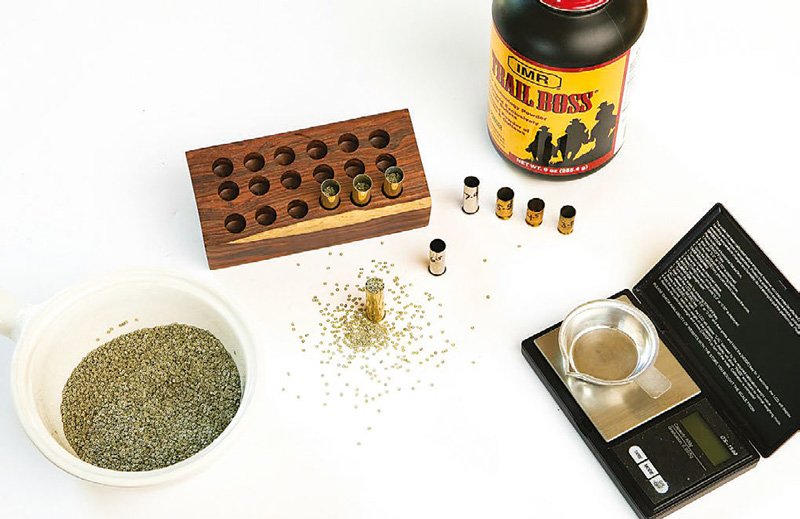
I found some soft-cast .429 Keithtype bullets cheap, and with them came an epiphany. I belled the stillprimed .44 cases and loaded Trail Boss with those bullets. They averaged 795 fps through my 629 with 25 fps extreme spread. I spent a few quality afternoons slaying rocks and dirt clods with that rehabilitated ammo. It shot great!
The additional volume that Trail Boss occupies in cases produces more uniform ignition than small charges of fast-burning powder. This results in consistent velocities even with mystery primers and low-rent bullets.
NEW LIFE FOR CLASSICS
Trail Boss is also useful to breathe life into old guns you might not otherwise shoot. I acquired an S&W 2nd Model Hand Ejector that began life as a .455 British but had been rechambered for .45 Colt. I’d always been hesitant to shoot it with factory ammunition. A 200-grain cast bullet over 6.0 grains of Trail Boss generates 770 fps at about 9,000 PSI. It agreed with the old Smith and transformed it from wall hanger to recreational shooter.
Trail Boss is perfect for shooting old guns in blackpowder-era cartridges like the .38-40, .44-40, and .32-20. It will also make imminently tolerable plinking fodder for a .500 or .460 S&W with cast bullets.
Handgun data is tilted in favor of revolvers, but Hodgdon shows loads for the .45 ACP. I experimented with 230-grain LRNs on a max charge of 4.5 grains (rated at 761 fps). Tested in a five-inch Kimber 1911, they averaged 768 fps. Trying the same charge under 200-grain cast SWCs produced 796 fps. The Kimber functioned 100% with both loads.
There is no data for the 9mm or .40 S&W, I suspect because you can’t get enough in the smaller cases to generate enough pressure for reliable operation.
Trail Boss has been used for reduced- recoil loads in old Winchester and Sharps rifles chambered for .30- 30, .45-70, and even .50-110 class cartridges. These loads with cast bullets make the old guns inexpensive to shoot and recoil modestly, adding appeal to a wider range of shooters.
Reviewing older editions of Hodgdon’s paperback manuals shows the versatility of Trail Boss. It’s been used for reduced loads with jacketed bullets for cartridges like the .30-06, .300 Win. Mag, and .270 Win. The 2013 manual shows subsonic loads for .223 Rem., 6.8mm SPC, and .308 Winchester—also using jacketed bullets.
START RELOADING WITH TRAIL BOSS
If you’re thinking about getting into reloading, Trail Boss is a good place to start. It’s hard to get into trouble with it. But don’t use it with jacketed bullets in handguns. The additional friction of the gilded metal makes sticking a bullet in a bore more likely at the low velocities involved.
All you need are a single-stage press, dies and shell holder, hand priming tool, and budget brass tumbler. Add a $30 electronic scale and an inexpensive chronograph to check your work. Grab a manual and start building safe, enjoyable handloads for affordable practice. It’ll be money well spent.
